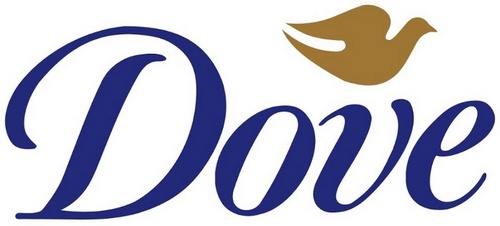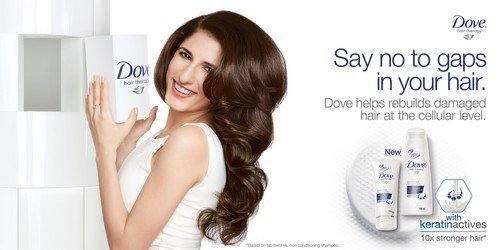The Marketing mix of Dove analyses the 4Ps of Dove, which includes the Product, Price, Place, and Promotion of Dove. Dove is a subsidiary of its parent company, Unilever, and is associated with personal care. It was launched in the United Kingdom’s consumer market in 1955. Dove belongs to the FMCG sector, and its main USP is that it has proved to be a single product with twin effects like a moisturizer and the primary product for dry skin. As its customer base, Dove has targeted women of any size, shape, or age. As its products are priced higher than its competitors, the brand has targeted upper- and upper-middle-class women. Some important rival companies of Dove are as follows-
- Nivea
- Neutrogena from Johnson % Johnson
- Olay from Procter & Gamble
About Dove
- Type: Personal care products.
- Industry: Beauty and personal care
- Founded: 1957
- Founders: Vincent Lamberti
- Headquarters: London, England
- Area served: Over 150 countries
- Current CEO: Alan Jope
- Number of employees: 149,000
- Major products: Dove soap, body wash, deodorant, lotion, hair care, and facial care products.
Table of Contents
Dove Product Strategy
Manufacturing of a Dove product includes primary ingredients like vegetable oils, synthetic surfactants, animal fat salts, zero levels of Ph, and 1/4th moisturizing cream. The brand deals in products mostly for women and is committed to providing a product that will enhance her beauty.
The product mix of Dove in 2023 is as follows(Source)
- Dove Beauty Bars and Body Washes: Dove Beauty Bar (Original, Sensitive Skin, etc.), Dove Body Wash (Various formulations, scents, and sizes).
- Dove Hair Care Products: Dove Shampoo and Conditioner (Daily Moisture, Intensive Repair, etc.), Dove Dry Shampoo, Dove Styling Products (Hair sprays, serums, mousse, etc.)
- Dove Deodorants and Antiperspirants: Dove Antiperspirant Deodorant (Various scents and formulations), Dove Advanced Care Deodorant
- Dove Men+Care Products: Dove Men+Care Body Wash and Bar Soap, Dove Men+Care Shampoo and Conditioner, Dove Men+Care Deodorant and Antiperspirant
- Dove Skin Care Products: Dove Creams and Lotions (Intensive Cream, Body Lotion, etc.), Dove DermaSeries (Products for dry skin and sensitive skin)
- Dove Baby Care: Dove Baby Bar Soap, Dove Baby Shampoo and Lotion
- Dove Specialty Products: Dove Beauty Cream Bar for Face, Dove Exfoliating Body Polish, Dove Men+Care Face Care Products.
Dove Place Strategy
Dove is an international brand with a global presence. Its network is spread in various parts of the world, and manufacturing of its products takes place in several countries like the United States, Turkey, Thailand, South Africa, Philippines, Pakistan, Netherlands, Mexico, Ireland, Israel, Indonesia, India, Germany, China, Canada, Brazil, Australia and Argentina.
Products are sold in nearly eighty countries with the help of a fine and efficient distribution channel. It includes manufacturers, retailers, and consumers via general stores, retail stores, convenience stores, discount stores, supermarkets, malls, and hypermarkets. Retailers must see that products are easily available to customers at respective stores through the help of at least two thousand five hundred stockists.
Dove, a well-known personal care brand, employs a place strategy to ensure its products and marketing strategies are readily available to consumers worldwide. Here are five key components of Dove’s place strategy:
- Extensive Retail Distribution: Dove products are strategically positioned in various retail outlets, including supermarkets, drugstores, convenience stores, and online marketplaces. This extensive retail distribution ensures accessibility to consumers in both urban and rural areas.
- Global Market Presence: Dove has a global footprint, making its products available in numerous countries. This international presence involves partnerships with local distributors and retailers to cater to the diverse needs of consumers worldwide.
- E-commerce and Online Retail: Dove maintains a robust online presence through its official website and e-commerce platforms. Customers can conveniently purchase Dove products online, providing an additional channel for accessibility and convenience.
- Product Placement and Merchandising: Within physical retail stores, Dove strategically places its products on shelves and endcaps, often in high-visibility areas. Eye-catching displays and attractive packaging contribute to its in-store visibility and appeal.
- Brand Partnerships and Collaborations: Dove collaborates with various beauty salons, spas, and healthcare facilities to offer its products in professional settings. These partnerships enhance brand credibility and expose Dove products to consumers seeking expert recommendations.
Dove Pricing Strategy
Dove has been projected as a premium product in the market. Still, the company has a well-integrated pricing strategy for its products that includes keeping its pricing policy reasonable and affordable but with a distinctive brand identity. Compared to the products of its competitors
Dove products are priced a bit higher, but its qualitative products have been a great help to the whole brand image as it has successfully implemented its pricing policy.
Women think of Dove as a high-end product and are willing to spend a few extra bucks on personal care products that will help enhance their beauty. Dove has adopted a value-added pricing policy for all its products because customers generally relate high prices with qualitative products.
- Premium Pricing for Quality: Dove positions itself as a premium brand known for its quality and gentle care. Consequently, it often charges slightly higher prices than competing mass-market brands.
- Price Tiering and Product Range: Dove employs a tiered pricing strategy within its product range. It offers a variety of products within each category, allowing customers to choose products that match their budget while still enjoying the Dove experience. This tiering strategy caters to a wide range of consumer segments.
- Promotional Pricing and Bundling: Dove frequently runs promotional campaigns, offering discounts, multi-packs, and value bundles. These promotions encourage larger purchases and brand loyalty while attracting budget-conscious consumers.
- Value Perception: Dove emphasizes the value it provides to customers, highlighting factors such as moisturizing properties, dermatologist recommendations, and years of research and development.
- Dynamic Pricing: Dove may also employ active pricing strategies, especially in the e-commerce space, where prices can vary based on factors like demand, location, and seasonality.
- Premium Packaging: Dove invests in premium packaging design and materials, contributing to the perception of a higher-end product.
Dove Promotion Strategy
Dove has strong brand awareness in the consumer market, which has been possible because of sophisticated marketing strategies and advertising. Marketing policies have a huge role in the making and success of a brand. Campaigns and advertisements increase the visibility of a brand and create a positive impact on the minds of consumers. Advertisements for several Dove products are aired on different television channels and radio. It has also roped in print media to market its products through newspaper ads, magazines, and billboards.
Advertisements emphasize the buyer and her reaction after usage of this product. It is her acceptability of the given product that a viewer relates to and creates a positive influence on her mindset. Dove adopted a very unusual promotional policy for its products. Instead of using a celebrity, it chose an ordinary woman who looks extraordinary after using its product. Ads used the word Real beauty in the context of confidence, thus creating a good customer base. Dove also has a social media marketing presence on social platforms through Twitter and Facebook and has created a fan following.
Dove’s promotion marketing strategy revolves around:
- Emotional Advertising: Utilizing emotionally-driven marketing campaigns that focus on self-esteem, body positivity, and inclusivity to connect with consumers personally.
- Celebrity Endorsements: Collaborating with well-known personalities and experts in the beauty industry to enhance brand credibility and visibility.
- Social Media Engagement: Actively engaging with consumers on social media platforms, encouraging user-generated content, and running online contests and challenges to foster brand loyalty and community involvement.
Some Recent Video ads and Print ads of Dove are:
Liked this post? Check out the complete series on Marketing Mix


Good evening, Sir! What are your basis here? Are those sources liable? I just want to know your references on this topic. Thank you, Sir!.